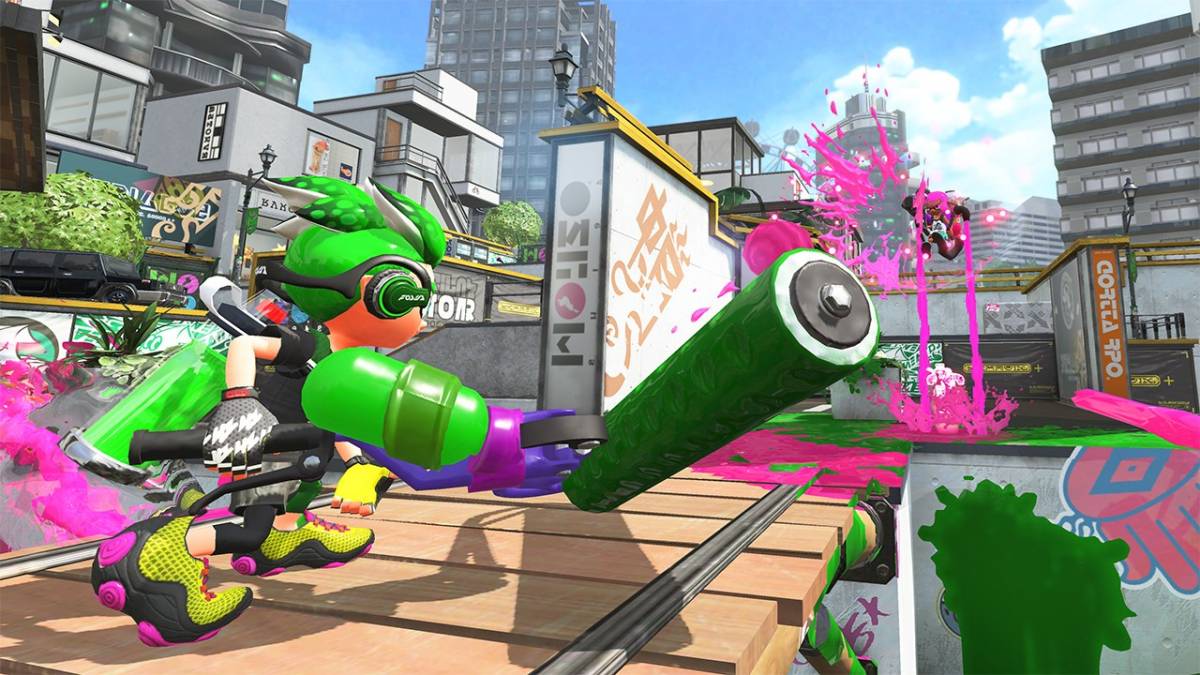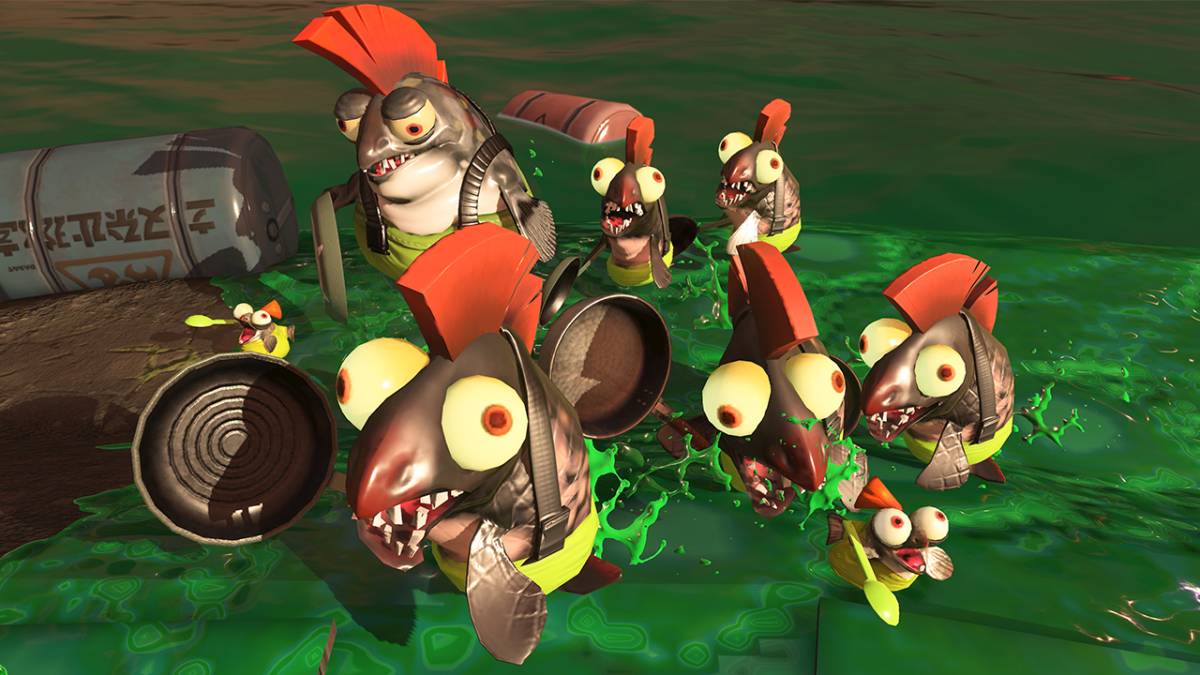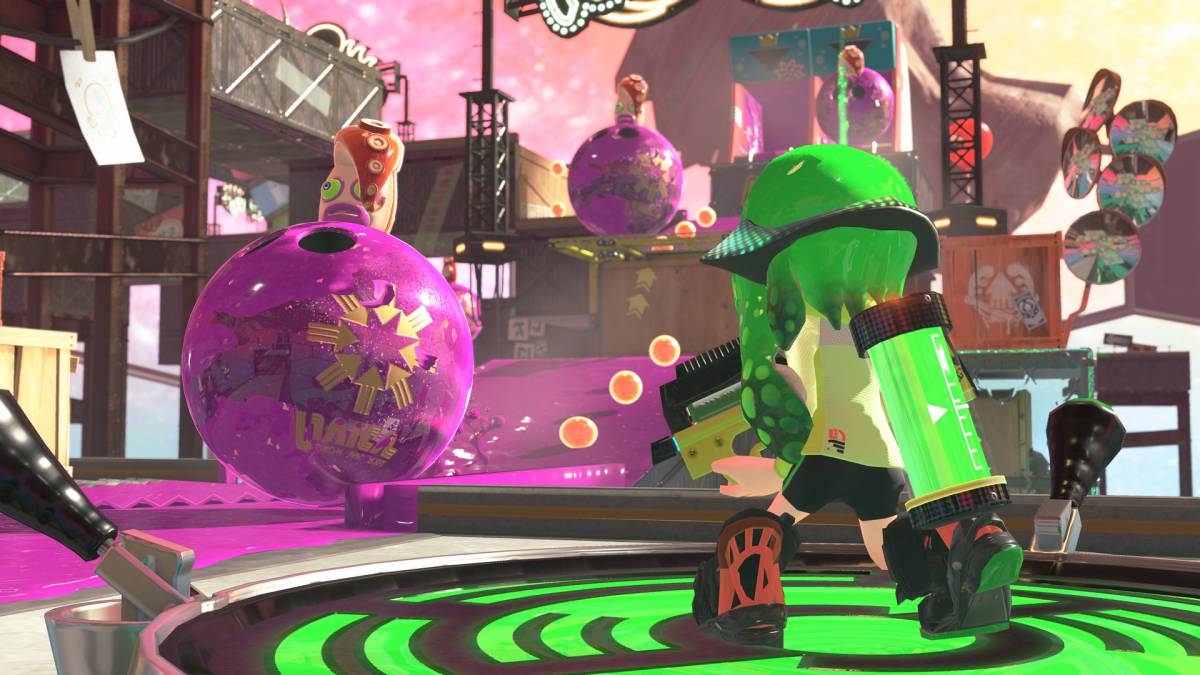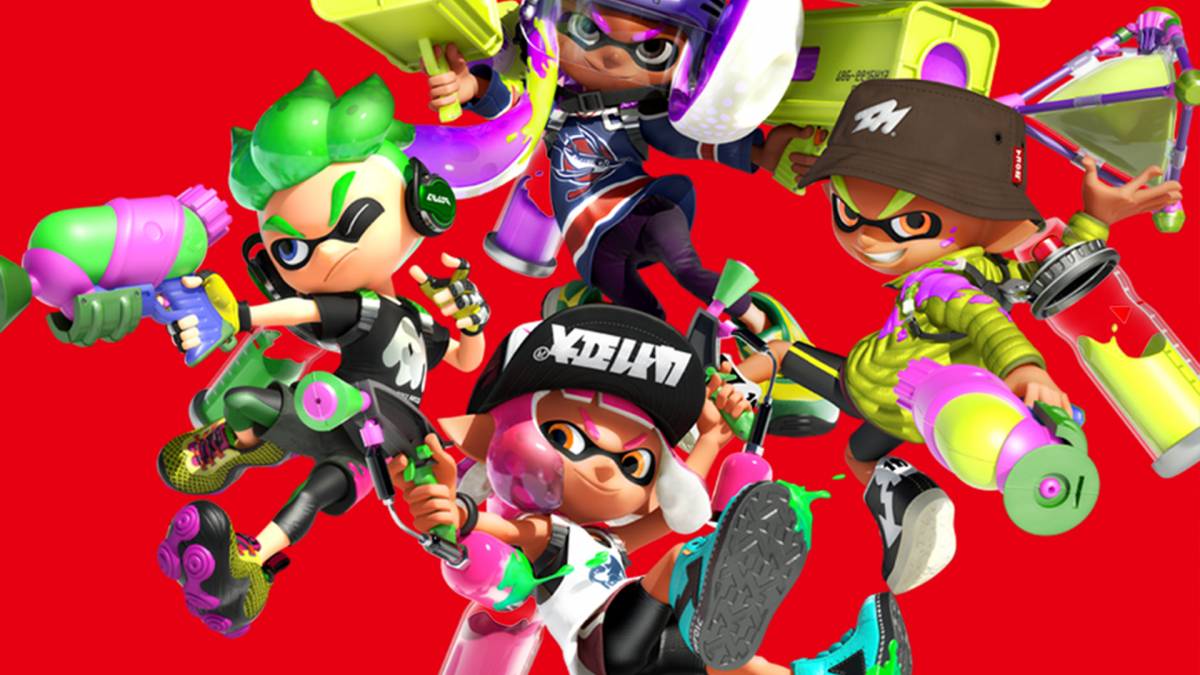Splatoon 2 for Switch is the follow-up to 2015’s Splatoon for Wii U. So how is it? Is it worth a purchase for fans of Splatoon 1? For Switch owners in general? How does it compare to the original Splatoon?
The first Splatoon was a bizarre new game from Nintendo that ended up being a big hit. It was the sixth best-selling game on Wii U, and one of the only Wii U bestsellers to not feature Mario, meaning it achieved success on its own merits, rather than relying on brand recognition to do well. Somehow Nintendo had managed to create a new and intriguing game that had caught gamers’ attention and received critical acclaim, despite it being released on the largely unsuccessful Wii U. It was one of the best games on the system for sure.
If you’re not familiar with Splatoon, I’ll describe it briefly. You play as a squid-kid called an Inkling with the ability to transform between humanoid and squid forms. You shoot brightly coloured blobs of ink on the floor with your weapons, trying to cover as much of the floor as possible. You can swim through your team’s ink in squid form, but get slowed down and become vulnerable when standing on enemy ink. There are two teams of four squids each shooting at each other, and the team who has the most turf painted in their colour when time runs out is the winner.

The aesthetics are great – the Inklings have this urban cool-kid culture, with skateboards and graffiti and all that, which really fits the tone of the gameplay, in addition to making for appealing character designs. The music is this bizarre rock with squid-gibberish vocals that manages to be really catchy somehow. The gameplay accommodates many different playstyles and skill levels and is quite accessible to newcomers, and the motion controls actually work quite well to enhance your ability to aim.
There’s a bit more to it than that – you have subweapons and special moves, gear with abilities, different game modes and a large variety of weapons to choose from, etc. But this is the basic gist of the Splatoon gameplay.
So what does Splatoon 2 add to the game to make it different from Splatoon 1? Well, the answer is… not much. The biggest addition is a new mode called Salmon Run where a team of four players fight against hordes of monstrous salmon enemies. It’s actually a really great addition, and it makes a nice change of pace from the regular turf wars.

But other than that, the game is largely the same. They replaced all of the Special abilities in order to make them a bit less overcentralising and more situational, but that’s more of a balance change than a fundamental gameplay shift. There’s also new maps and weapons, and various other minor changes and additions. The truth of the matter is that Splatoon 2 is basically the same thing as Splatoon 1, and the only selling point it has is that it’s on Switch and not Wii U. And as it turns out, this is actually the most significant and important thing about it.
The truth is, Nintendo needed to release Splatoon for Switch early in the console’s life. It’s one of Nintendo’s most popular modern games with an active community of eager players, and if they didn’t make the game available on Switch, Nintendo could have very easily lost the interest of a significant number of dedicated players, as the game would have been stuck on the increasingly irrelevant Wii U.
Throughout the life of Splatoon on Wii U, the devs continuously updated the game, adding new weapons, new maps and even new music. The game was consistently expanding and evolving, and the fact that Splatoon on the Switch is a fully-fledged sequel rather than an expanded port seems to indicate that the devs are still trying to refine and fine-tune the gameplay as best as they can, using the new console release as an opportunity to release an overhauled version of the game.

We all would have been 100% satisfied if they just ported the first game to the Switch without any changes, because what the fans truly wanted was to be able to play Splatoon on the Switch. The fact that we got a sequel turned out to actually be better for everyone involved – the devs got the opportunity to change the special weapons and gear abilities without changing the game’s fundamentals too much, fans of Splatoon can now play it on their shiny new Switch console, Nintendo gets to enjoy the game’s success again, and Switch owners get a great game early in the console’s life. It’s all good.
It is important to point out that this would not be a worthy sequel if it was released on the same system as the original game, since it doesn’t change enough. For players coming into the series fresh, it makes the most sense to just play Splatoon 2 and ignore the first one completely, especially since we don’t know how long Nintendo will support the Wii U’s online service.
So that’s the situation with the game: It’s basically the same thing as first game, but tweaked a bit and on the new console. We love it despite how little it’s changed, pretty much entirely because it’s for the new system.
If you’re interested in a quirky and colourful competitive game from Nintendo, I’d definitely recommend Splatoon 2 for Switch.
Some of the coverage you find on Cultured Vultures contains affiliate links, which provide us with small commissions based on purchases made from visiting our site.

